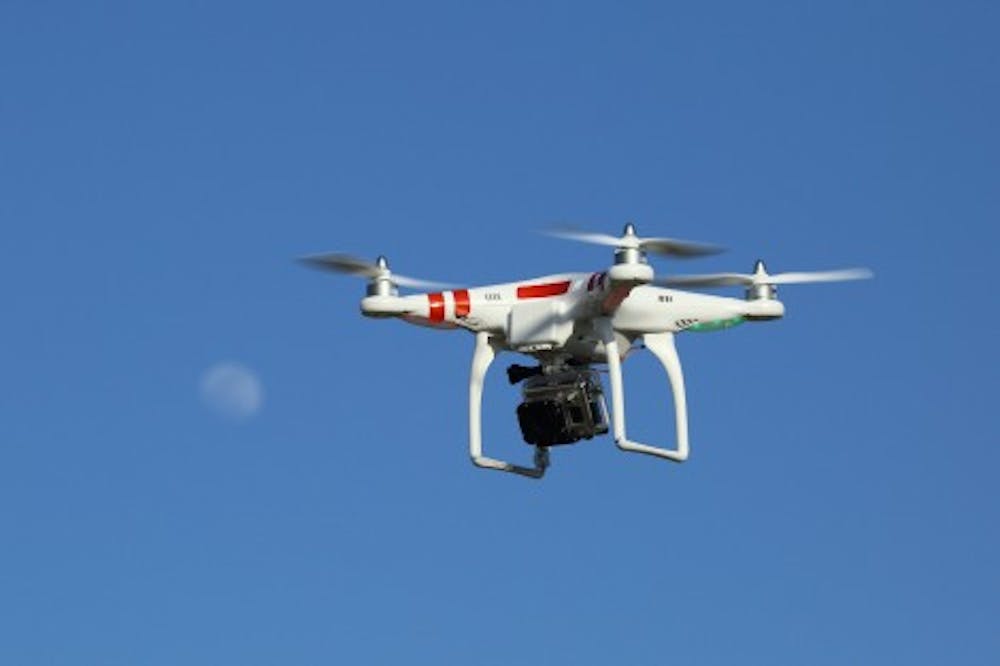BY ELLI TIAN
Historically drones were only used for governmental surveillance. However, the decreasing prices and increased versatility of such airborne robots have made them much more accessible to the general public. Drones can now be used for a wide array of tasks, from taking photos to delivering packages, and many are simple enough to be flown by anyone who knows how to use a remote control.
The increasing popularity of drones is causing problems for the airplanes and helicopters that normally occupy the skies. Even though drones are much smaller than commercial jets they can still cause huge problems if they collide with a windshield or an engine. Drones can also carry devices that may interfere with GPS or sensors on larger airplanes. In a worst-case scenario, drones detected in an airspace can prevent all aircraft, even air ambulances and firefighting jets, from taking off or landing.
Security and privacy is another issue linked to the growing use of drones. Drones are small enough to enter private spaces — restricted military bases, sports arenas and even your neighbor’s backyard — without being detected and can often record and store hours of video.
The problem is bigger than you might think. A leaked report from the Federal Aviation Administration (FAA) reveals that, although no actual collisions between airplanes and drones have occurred so far this year, there were almost 700 close calls. Furthermore the report indicates that these close calls are not that easy to prevent. While the FAA has established rules about when, where and how drones can be flown, it has had some trouble enforcing these rules because the location of drones can be hard to detect.
Limiting the activity of rogue drones could require more heavily enforced legislation and the development of tracking and safety technologies for the robots.
Recent legislative advances have been rather slow. The National Aeronautics and Space Administration (NASA) is developing a system to enforce the FAA’s rule that drones must fly below 500 feet, but the agency has been hindered by a lack of updated data on terrain and weather.
In addition, the FAA will miss the final deadline of September 2015 that Congress set for the standardization of drone operations, after also missing several earlier deadlines.
Technological advances have meanwhile been much faster. Some companies are already building more advanced safety features into their drones — for example, DJI’s Phantom quadcoptor drones include a “return-to-home” feature that automatically sends the drone to its charging pad when it reaches 10 percent battery.
Other drones have a “geo-fencing” system that allows users to pick the areas in which their drones will be able to fly based on a number of pre-approved airspace zones. The overall goal of these technologies is to make drones safer and easier to fly by compensating for pilot error and potential drone failures.
Even though the FAA has currently banned all commercial and hobby drones while they attempt to sort out regulations, the lack of enforcement has meant that people have continued to fly and use drones anyway.
Neither the FAA nor NASA expect to have their respective regulations finalized before 2017, so until then airplane pilots and drone pilots will have to be watch out for one another while they share the skies.





